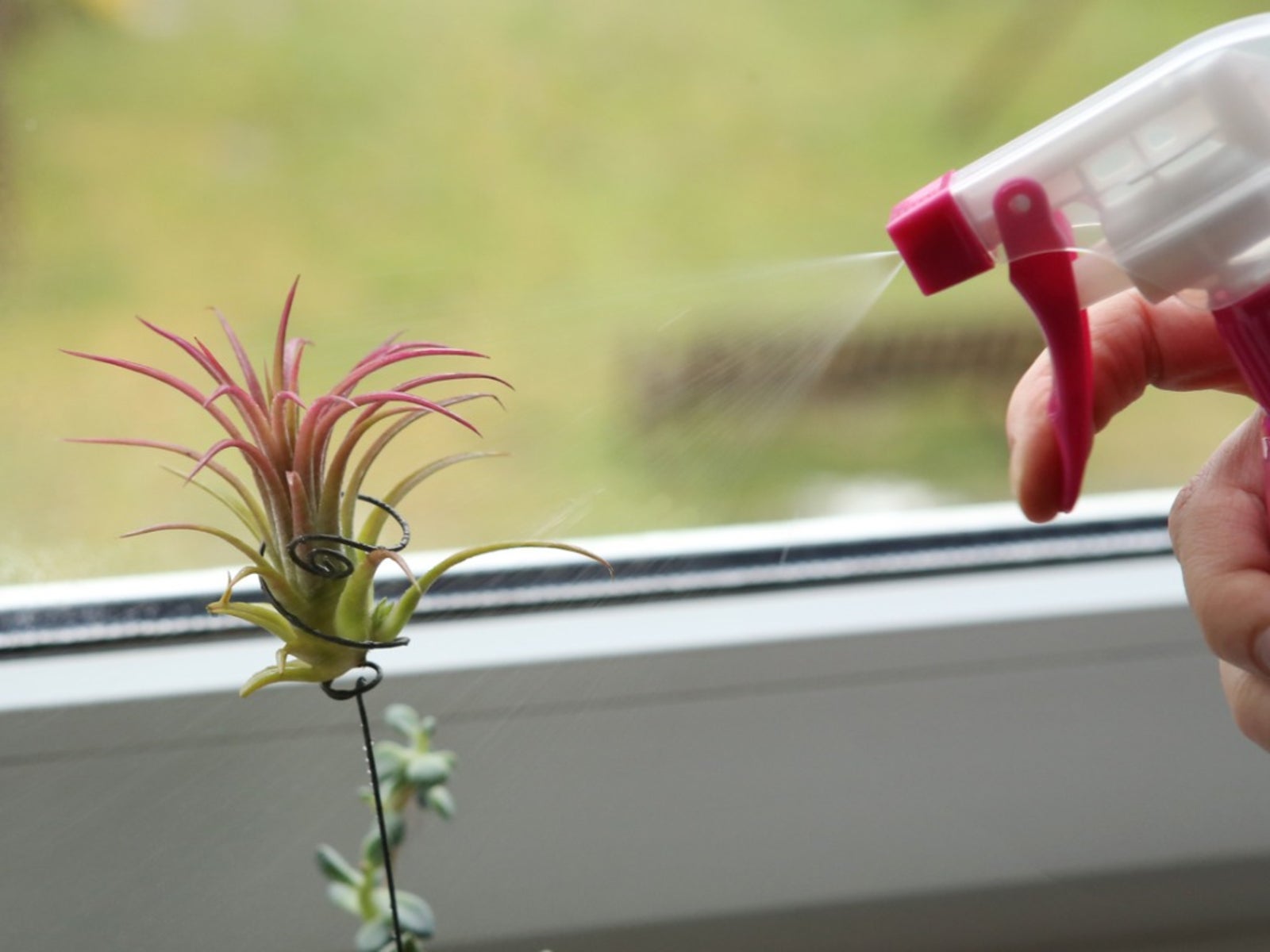Air Plant Misting: How Do I Water An Air Plant


Amy Draiss
A new owner of Tillandsia may wonder, "Can you water an air plant too much?" How often to mist air plants depends upon the type, the situation, and the size of the plant as well as the environment. There are three main ways to keep your air plant moist. Once you know all three, you can decide which way will work best for your plant. This article will tell you the methods and how often to mist air plants. Then you will be on your way to healthy, happy Tillandsia of any variety.
Can You Water an Air Plant Too Much?
Tillandsia, or air plants, are one of the more unique forms of flora on our planet. Air plants are often thought to require no water because they harness it from the air and occasional rain storms. In their native regions, this is almost true but in the home setting, ambient air is too arid and no sudden storms will pass by. Tillandsia need regular moisture but should not be overwatered. This can pose a problem with mounted air plants, but we'll walk through a couple of methods of keeping your plant moist. Air plants are bromeliads and epiphytic. They tend to grow on logs, in cracks and crevasses, and even off live plants, although they are not parasitic. They are most common in tropical forest settings, although a few live in more arid climates. Just like any plant, air plants need regular water, light, and food. They are trickier than other houseplants because they are in a soilless environment, often mounted on something or inside a terrarium or glass bowl. The lack of media to hold moisture and nutrients poses a dilemma on how to keep them healthy. Air plant misting is the most common method of watering but it doesn't get plant roots really well moistened and can cause leaves to have fungal issues if the plant isn't in good ventilation where leaves dry quickly. Spraying air plants is best to increase humidity in really dry homes and climates.
How Do I Water an Air Plant?
The method of watering will depend upon the style of installation of your air plant. There are three main ways to water Tillandsia. Misting is the first, rinsing the second, and soaking the third. Now the last two will obviously not work on a mounted specimen unless the mount is safe to have wet.
- How often to mist air plants? In this case, mist the plants 3 to 7 times a week, depending how dry your home air is and what time of year. Summertime plants need more water while they can sustain on less in winter.
- Rinsing the plants requires you to remove them from their mount and place them in a sieve to be rinsed thoroughly. All parts need to well soaked, including foliage and roots.
- Soaking is the more thorough method but, again, requires removing the plant from its display. Soak the plant 1 or 2 times per week for 5 hours.
When Spraying Air Plants is Most Beneficial
Air plant misting is not the most effective method of watering the plants but it is the most convenient because it allows you to provide moisture in the plant's setting. Otherwise, you will have to remove the wire that holds the plant on its display and rinse or soak to really get moisture into the roots. In winter, when water needs are lower, misting is an adequate way to give the plant the minimum amount of water. Additionally, in summer when temperatures soar, a nice water bath in the form of spraying will refresh heat-stressed plants. If you want your air plant really healthy, however, misting is just not going to do a good enough job providing moisture. Dunk or soak your plant at least two times per month if you are primarily misting to give it moisture. This can provide the deep water intake the plant needs to sustain in its aerial setting.
Sign up for the Gardening Know How newsletter today and receive a free copy of our e-book "How to Grow Delicious Tomatoes".

Bonnie Grant is a professional landscaper with a Certification in Urban Gardening. She has been gardening and writing for 15 years. A former professional chef, she has a passion for edible landscaping.
- Amy DraissDigital Community Manager